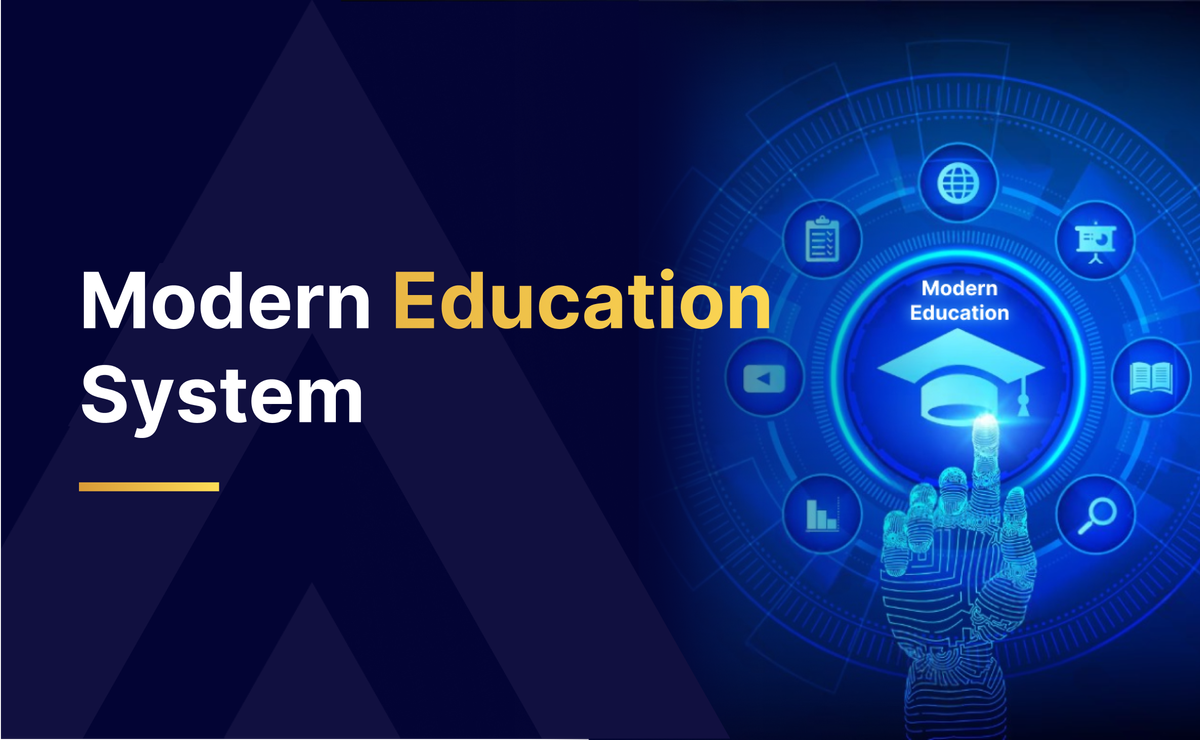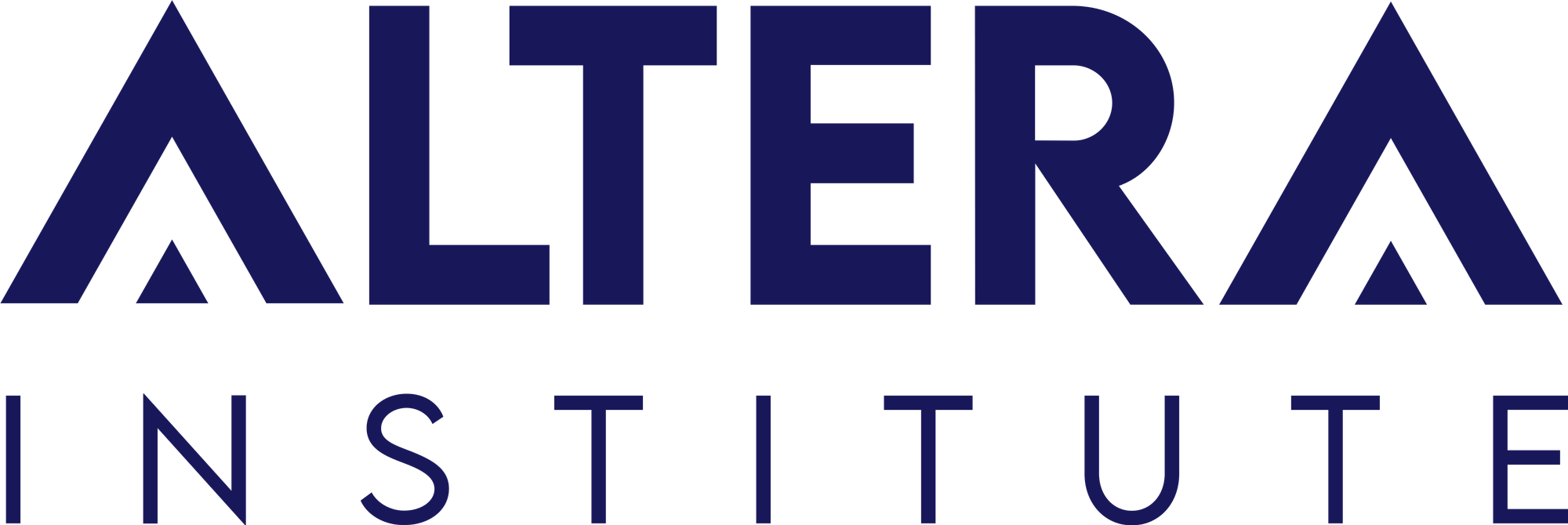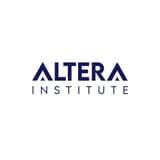What is a Modern Education System?

India is undergoing a significant transformation in the field of education, and conventional models are adapting to meet the needs of a digital economy. The rise of new professional jobs in industries is an indicator of an increased demand for modern methods of education that would match the changes.
Modern education promotes creativity and innovation with practical and experiential learning that requires students to transcend classical paradigms. This has resulted in specialist jobs that provide better growth opportunities and respond to the technological nature of the contemporary world.
As education evolves, we must ask: Are we preparing students to think, question, and grow? At Altera, our program moves students beyond rote learning to clarity, confidence, and curiosity—the foundation for modern success.
The education system is undergoing a transformation, driven by practicality, adaptability, and technology, paving the way for modern education in India.
What is the Modern Education System in India?
The modern Indian education system integrates traditional academic disciplines with innovative approaches to promote holistic student development. It values core subjects while also emphasizing critical thinking, life skills, value-based learning, analytical abilities, and effective decision-making.

Modern education uses technology and interactive platforms to deliver experiential learning that reflects real-world challenges. This shifts the focus from teacher-led classes to a more interactive, student-focused model.
Traditional teaching methods aren't ignored—they’re reformulated with industry focus. Technological integration creates a flexible, practical, and inclusive system that prepares students for a changing world.
Who Introduced Modern Education in India?

Modern education in India began during British rule, marked by the efforts of Thomas Babington Macaulay.
On February 2, 1835, Macaulay’s 'Minute on Indian Education' promoted English education, advocated for the closure of institutions focused on Oriental studies, and directed government resources toward Western sciences and literature.
While earlier reforms, such as the Charter Act of 1813, helped, Macaulay’s 1835 Minute laid the groundwork for modern education in India.
Modern Education Characteristics
Modern education still has the same elements of traditional education, like structured classrooms. Nevertheless, it also shifts the emphasis towards holistic development, critical thinking, and meaningful interaction with the students. The main features of contemporary education are the following:
- Personalized Learning: Modern education is focused on the needs, inclinations, and possibilities of every student. Active engagement and self-directed learning are promoted, which contribute to the acquisition of collaboration, critical thinking, and problem-solving skills. Individual learning shifts away from memorization to being creative and adaptive.
- Activity-Based Learning: Experiential and interactive learning is the basis of modern teaching. Activities, simulations, discussions, and collaborative projects are included because the teachers reflect the demands of the industry, ensuring that students learn to be confident, creative, and develop critical thinking skills.
- Integrative and Multidisciplinary: In modern education, traditional silos are collapsing, and the integration of disciplines is being incorporated to address the complexities of the world. For example, modern postgraduate programs in management integrate elements of marketing, technology, and data-driven decision-making, equipping students to excel in cross-functional roles such as digital brand management.
- Emphasis on Individualism: Recognizing that each student is unique; modern education is shifting away from a one-size-fits-all approach to teaching. It helps students identify their strengths, interests, and talents, allowing them to experience unique learning pathways that suit their personal aspirations and objectives.
- Development of Life Skills: Modern education emphasizes the development of life skills, such as flexibility, decision-making, and critical thinking, in addition to technical knowledge, as these are essential for success in leadership and overcoming changing challenges. Through practicing activities such as simulations and strategic efforts, students can acquire competencies that will guarantee their future career achievements in a rapidly evolving, digital-first world.
- Transforming Pedagogy: The emergence of technology-based innovations has led to significant changes in the way teaching is conducted. From gamified lessons to flipped classrooms, the current pedagogy is based on the active approach, which considers the diverse learning styles (visual, auditory, and kinesthetic) and provides the learning process with an inclusive character.
To conclude, modern education strives to develop wholesome individuals through its adaptive, inclusive, and student-centered approaches.
Traditional Education vs. Modern Education

Firstly, traditional education has an element of rote memorization, a strict schedule, and a teacher-focused method. It focuses on standardized tests and does not give flexibility in theoretical learning with outdated techniques. The imparting of knowledge is one way, and it focuses on societal norms and passive learning.
On the contrary, modern education is student-centered, and it incorporates technology, multimedia tools, and experiential learning techniques. It focuses on critical thinking, innovativeness, and real-world applications, and has a dynamic, flexible curriculum based on industry requirements. Modern education equips students with life skills and interdisciplinary studies that prepare them for the current dynamic world.
Read our detailed article on this theme to get an in-depth comparison of the differences between traditional and modern education systems in India.
Benefits of Modern Education
Modern education is flexible and student-based with an emphasis on industry-related skills, diversity, and accessibility to all. It will aim to provide a learning experience that fills the skills gap in students with practical knowledge critical to performing excellently in contemporary positions, as well as to make them job-ready on the frontline.
Modern education offers numerous benefits that qualify it as a potent instrument for shaping generations to come. These are some of the main strengths.
1) Practical Skills for Real-World Challenges:
Modern education is focused more on the acquisition of practical skills as opposed to theoretical knowledge. The curricula are built according to industry requirements, ensuring that students acquire the most applicable fundamentals in their fields of study.
Modern education also understands the importance of learning a certain niche, for example, how eCommerce works, from a relevant industry professional with extensive knowledge in this field. This way, students get an in-depth understanding of the field and its recent trends, which helps them prepare for the job market.
2) Accessibility for All:
What good is today's education system if it is not accessible to all, regardless of their socioeconomic standing? It is in this state that technological advances, including mobile applications, e-books, podcasts, videos, and interactive systems like YouTube, are becoming increasingly useful in delivering modern education to all individuals at all locations.
Education has been transformed through online education, virtual classes, and recorded lectures, allowing students in remote areas to access high-quality learning resources and narrowing the rural-urban education disparity.
3) Availability of Information:
The internet has introduced a revolution in the sharing and accessing of information. Some of the resources now within the reach of students and educators include e-books, videos, tutorials, and massive open online courses (MOOCs).
Such online resources not only provide free access to professional knowledge but also enable individuals to engage in personalized learning processes. Modern education is collaborative, and learners and teachers around the world can share their ideas, thereby establishing a global knowledge pool.
4) Emphasis on STEAM Education:
The concepts of STEAM — Science, Technology, Engineering, Arts, and Mathematics — are smoothly integrated into the modern education process to provide a comprehensive learning strategy. However, unlike conventional methods, the interdisciplinary approaches of STEAM education provide the delivery of these subjects through technology-driven, practical lessons.
Other tech-related skills, as well as coding and robotics, are now becoming part of current curricula. This is not only to equip students to be part of a globalized workforce, but it also piques students' interest in these important areas at a very young age.
5) Encourages Creativity and Innovation:
Creativity and innovation are developed by learners due to the student-oriented nature of modern education. Modern education fosters curiosity and independent thinking by incorporating activities such as questioning, demonstrations, and collaborative projects, all of which are based on hands-on learning. This interactive concept encourages students to examine their individual potential and think outside the box.
6) Focus on Lifelong Learning:
Modern education prioritises the need to adopt lifelong learning as an essential part of learning for students. As both digitally native and digitally accelerating companies in India are investing heavily in specialist roles, it becomes the responsibility of the modern workforce to continually learn and upskill themselves in response to the evolving industries.
Therefore, the modern system of education encourages students to be self-reliant learners and pursue knowledge through various avenues. This flexibility enables learners to stay current and relevant in an ever-changing world.
Effects of Modern Education
The Modern education system has brought about consistent and dramatic change in Indian society. Despite the distance to come, some of the impacts of contemporary learning are as follows:
- Social Transformation: Modern education is a driving force behind social change, facilitating inclusiveness and equality of opportunity. It has empowered people from various backgrounds to improve their socio-economic status, pursue tertiary education, and access improved career opportunities, thereby transforming the structure of society.
- Global Perspective: Through globalization, modern education is broadening horizons for learners, breaking geographical barriers, and providing access to international platforms. Students have the opportunity to engage with global networks, acquire diverse perspectives, and prepare for a competitive job market.
- Progressive Teaching and Learning Methods: Modern education has introduced innovative teaching patterns and technology-driven systems, meant for the digital-first world. It focuses on learner-driven approaches, fostering critical thinking, and sharpening problem-solving abilities to make education both impactful and engaging.
- Transforming Social Attitudes: The modern educational system promotes awareness and rational thinking on matters related to gender equality, social justice, and multiculturalism. It challenges archaic standards and fosters forward-thinking, which will lead to the creation of a more tolerant and equitable society.
- Economic Growth: Education is a pillar of economic development, and modern educational practices are making significant contributions to India's economic development. Educated people can be more innovative, productive, and active employees, contributing to the development of the country.
Challenges in the Modern Education

What are the main drawbacks of the modern education system? Let's explore the key challenges that the modern education sector in India must address to unlock its full potential.
- Absence of Individualized Learning: The Indian education system still adheres to a one-size-fits-all model, which fails to cater to the diverse needs and interests of students in their individual learning. Most schools and colleges have very strict pedagogies, and students cannot have individualized learning experiences.
- Outdated Curriculum: A significant issue is the slow pace of curriculum updates. An example of this is how traditional B-schools in India follow UGC guidelines for curriculum development, which restricts them from updating their curriculum according to industry needs.
- Teachers With Minimal Qualifications: A significant issue in this situation is the quality of teachers, and in this case, underqualified teachers are frequently hired, especially in private institutions. There are a lot of teachers who are not able to incorporate the current teaching method or match the shifting educational environment due to a lack of skills. There are no opportunities for reskilling, and training programs for teachers can be outdated, exacerbating the situation.
- Unequal Access to Quality Education: In India, despite improvements, disparity remains the norm in education. Learners in rural and economically disadvantaged areas often lack access to better schools, modern instructional materials, and trained teachers. Such a difference further widens the gap between urban and rural learners, thereby contributing to socio-economic inequalities.
These issues must be addressed to ensure that the existing education system in India not only keeps pace with global trends but also enables learners to succeed in an environment that is constantly changing.
FAQs:
Q1. What is the modern method of education?
Ans: The modern approach to education is more student-centered in its learning style; it has integrated technology, interactive forms of teaching, and real-world applications into the curriculum. It integrates old knowledge with new skills that are practical, promoting collaboration, digital literacy, and interdisciplinary learning to equip students for the fast-changing industries.
Q2. What are the objectives of modern education?
Ans: Modern education in India is aimed at developing creativity, critical thinking, and problem-solving skills, while promoting lifelong learning and equipping students with highly specialized skills in the rapidly evolving digital economy. It strives to build technical proficiency, leadership skills, flexibility, and a deep understanding of emerging global issues.
Q3. What are the four pillars of education?
Ans: The four pillars of education throughout life, as outlined by UNESCO, are:
- Learn to Know: Acquiring knowledge and understanding.
- Learn to Do: Enhancing practical skills and proficiency.
- Learn to Live Together: Developing collaborative and social abilities.
- Learn to Be: Promoting personal development and self-awareness.
Summing Up
The modern education system in India is undergoing significant changes, driven largely by the pressure of a fast-growing and increasingly digitalized economy. The transformation in old teaching methods is shifting toward a learner-centered, technology-based, and experience-based approach to learning, transforming the way students learn through these learning processes.
Modern education emphasizes creativity, critical thinking, and the practical application of knowledge, preparing students for specialized, high-growth positions in every industry. This approach makes them flexible and well-equipped to face future challenges.
Although there are still difficulties, such as stagnation in the curriculum and unequal access, the solution to these problems will unlock the full potential of the Indian education system, enabling the next generation to succeed in a rapidly and globally interconnected world.





